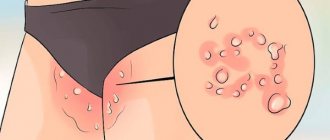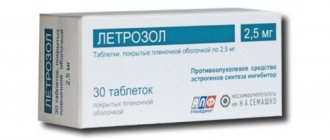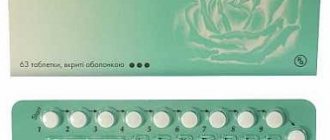Vaginal and rectal suppositories are prescribed for the treatment of various gynecological pathologies. This dosage form is highly effective, which is associated with the direct effect of the active substance on the affected tissue.
Suppositories are mainly used to treat infectious processes. Due to the fact that many pathologies are accompanied by inflammation, the use of suppositories is necessary as part of complex therapy.
One of the pathological conditions for which suppositories are often prescribed is cervical erosion. It should be noted that suppositories are usually not the basis of treatment for erosion. However, the peculiarities of the etiology and pathogenesis of the pathology often determine the need to prescribe suppositories that have an antibacterial effect.
As part of the combined treatment of cervical erosion, doctors may recommend the drug Betadine, which is available in the form of suppositories. This remedy can be used both in drug therapy and in surgical treatment.
Many women have heard about this condition of the cervix, which is called erosion. More than half of patients are diagnosed with this diagnosis both at a young and old age.
In fact, cervical erosion is referred to in the medical literature as ectopia. When talking about erosion, gynecologists mean one of several conditions of the cervix, which are designated as:
- congenital ectopia;
- true defect;
- acquired ectopia.
Thus, erosion implies a defect that forms in the area of the mucosa adjacent to the vagina. Erosion can occur in women of any age and is one of the most common conditions of the cervix.
It is noteworthy that cervical erosion does not always indicate the presence of pathology. In general, erosion is not a disease and has a benign course. However, we should also not forget that it is a background for the development of more dangerous ailments, such as dysplasia or cervical cancer.
Efficiency
The drug is a powerful antiseptic. It prevents infectious agents from entering the injured mucosal area (erosion before or after cauterization). It acts effectively against a fairly large number of pathogenic microorganisms and bacteria. Therefore, it effectively protects against most common diseases of the reproductive system.
The product also has a slight regenerative effect. It can accelerate tissue renewal and regeneration, which has a particularly positive effect on the patient’s condition after cauterization of erosion.
Release form and effectiveness
Betadine is an antiseptic that comes in many different forms. The most widely used solution is the solution. It is used as an antiseptic in surgery, as well as for washing wounds, etc. Theoretically, it can be used for douching for cervical erosion, but its effectiveness with this use is very low.
Betadine ointment is also used to disinfect hands and treat wounds. Also not used in gynecology. It is impossible to apply it to the affected areas with cervical erosion.
Betadine suppositories are much more effective. Since they help ensure that the active substance reaches the affected areas.
Symptoms and treatment methods
The occurrence of erosion is not accompanied by signs that would indicate pathology. If the defect is not complicated by other diseases, a woman may notice spotting after sexual intercourse and examination of the cervix by a doctor. These discharges are associated with increased susceptibility of the area with cylindrical cells, which is often subject to trauma.
Sometimes with ectopia there is an increase in the amount of mucous discharge. Their appearance is associated with the glands of cylindrical cells that produce mucus. If a vaginal smear is performed, an increased level of leukocytes may be detected in the absence of inflammation.
In more than 80% of cases, erosion is complicated and is accompanied by the following symptoms:
- pain syndrome;
- discomfort in the genital area;
- bleeding and acyclic spotting;
- cycle disorders;
- pathological discharge that may have an unpleasant odor.
Erosion can be detected by examining the cervix in a speculum. Different types of erosion have their own visual signs:
- congenital ectopia has an even shape and a visible transition zone;
- true erosion is accompanied by the formation of a stain;
- pseudo-erosion is manifested by a defect of different volume and shape.
To confirm the diagnosis and exclude more dangerous diseases, differential diagnosis should be carried out, implying:
- colposcopy in simple and advanced versions;
- flora smear;
- cytological examination;
- bacterial sowing;
- PCR for detection of sexually transmitted infections;
- biopsy if dysplasia or cancer is suspected.
Treatment depends on the type of defect. Congenital ectopia only needs diagnosis if there are no signs of inflammation. Otherwise, drug treatment is carried out, for example, Betadine suppositories. True erosion is treated with anti-inflammatory and wound-healing drugs.
Pseudo-erosion is eliminated by cauterization using the following tactics:
- chemical coagulation;
- cryodestruction;
- diathermocoagulation;
- laser vaporization;
- radio wave method.
As part of conservative and complex therapy, gynecologists often prescribe Betadine suppositories.
Indications
Due to the content of active iodine in the preparation, it has an extremely wide spectrum of action. Currently, no common species of bacteria (those found in the reproductive system) that are resistant to the effects of this drug have been identified. Therefore, it is prescribed for many diagnoses:
- Erosion of the cervix before and after cauterization, or during drug treatment;
- Vaginitis and vaginosis caused by microorganisms sensitive to the active substance;
- Trichomoniasis;
- Candidiasis, especially after taking steroids or antibiotics;
- As an antiseptic before and after gynecological operations;
- As an antiseptic before and after childbirth.
Betadine should be used after and before cauterization strictly according to the doctor’s recommendation.
Suppositories for the treatment of cervical erosion
Reading time: min.
No time to read
Cervical erosion is a dangerous condition of the organ, which can become a focus for the development of cancer. The risk of developing cancer pathology with erosion is quite high. Therefore, treatment of this pathology is mandatory. At the moment, there are a large number of methods for treating cervical erosion.
And therefore, the doctor and patient are faced with the question of how to treat cervical erosion. Vaginal suppositories for cervical erosion are an alternative method of treating small erosions. The affected area of the cervical epithelium should not exceed more than 1-2 centimeters.
The use of suppositories is especially important for young nulliparous women.
What suppositories are used to treat cervical erosion?
The use of suppositories for cervical erosion is not a conservative method of treating the disease. In most cases, suppositories are used to heal cervical erosion.
They are also prescribed to speed up the healing process after other treatment methods, such as diathermocoagulation or cryodestruction and more.
In addition, an independent decision to use a remedy such as suppositories to treat cervical erosion can lead to more serious consequences.
Like all treatment methods, suppositories for the treatment of cervical erosion have indications and contraindications. The use of suppositories is contraindicated, first of all, in case of individual intolerance to the components of the drug. It is also not advisable to use suppositories in women with cervical erosion measuring more than 2-3 centimeters in diameter. This size of the pathological area requires more radical treatment.
It is advisable to use suppositories against cervical erosion in the following cases:
- in the initial stages of cervical erosion;
- if the cause of cervical erosion is a violation of the vaginal microflora;
- in the presence of inflammatory processes of the genitourinary system;
- in women who have not yet given birth but are planning a pregnancy;
- with frequent changes of sexual partners, with the absence of barrier contraceptives;
- with hormonal imbalance, which led to the development of cervical erosion.
When treating a diagnosis of cervical erosion, suppositories have a number of advantages:
- medicinal substances contained in the suppository are absorbed directly into the area where the pathological process is localized. This allows you to speed up the process of replacing erosive tissue with healthy epithelium;
- due to their consistency, the suppositories melt under the influence of body temperature, thereby enveloping the mucous membrane of the vagina and cervix, evenly distributed in the vaginal cavity;
- suppositories have a softening effect on the inflamed mucous membrane of the cervix, due to which the feeling of discomfort disappears. Also, this effect after surgical treatment ensures comfortable and painless rejection of the resulting scab;
- the active substances of the suppositories do not disrupt the normal microflora of the vagina;
- candles have an advantage due to their shape and method of application, since candles do not require preliminary preparation;
- availability of purchase. Most suppositories are available without a doctor's prescription. In addition, you can prepare candles yourself at home.
Only the attending physician can decide which suppositories for cervical erosion are best after receiving the results of additional studies. Therefore, before choosing candles, you need to undergo some tests:
- a biopsy is performed to determine the nature of the pathological process. Using this analysis, the doctor determines the presence of atypical cells in the area of pathology;
- blood test to detect syphilis, hepatitis and HIV;
- tests to determine sexually transmitted infections (chlamydia, mycoplasma, ureaplasma), as well as determination of the human papillomavirus;
- smear analysis to determine vaginal flora;
- performing colposcopy. Examination of the mucous membrane of the vagina and cervix with multiple magnification;
- if necessary, ultrasound diagnostics of the pelvic organs;
- bacterial culture of a smear taken from the cervical canal of the cervix.
After receiving the results, the doctor decides which suppositories are needed for cervical erosion. The list of drugs prescribed most often consists of several groups of drugs:
- suppositories with an anti-inflammatory effect aimed at eliminating the inflammatory process;
- suppositories with antibacterial components, acting as a topical antibiotic;
- contraceptive suppositories, the action of which is aimed at restoring hormonal levels, as well as to protect against unwanted pregnancy during illness;
- suppositories containing antiseptics to restore normal vaginal flora, as well as to prevent infection.
Names of suppositories for the treatment of cervical erosion
Next, we will consider what suppositories are used for cervical erosion. Names in the pharmacological field may differ; it is important to pay attention to the constituent components of the drug. Among the most frequently prescribed is Depantol.
Suppositories for cervical erosion with this trade name have an antiseptic effect and also normalize the vaginal flora. It is also advisable to prescribe this drug in the period after laser, radio wave and chemical cauterization of cervical erosion.
To use, the suppository must be removed from the shell and inserted into the vagina. It is recommended to use Depantol twice a day.
. When using these candles, you must avoid toilet soap, since the chemicals contained in soap are antagonists of the drug. In addition, combined use may cause a local allergic reaction. The duration of use of the drug is determined by the attending physician, depending on the stage of cervical erosion.
Treatment with suppositories, the name of the drugs may differ depending on which company produces them. Thus, analogues of “Depantol” are drugs such as “Pharmproekt”, and “Hexicon” or “Betadine” are similar in action.
Betadine
Today, Betadine suppositories for cervical erosion have found widespread use. Betadine is considered to be a drug that has high results when applied topically.
The use of this particular form of the drug is explained by the fact that suppositories act directly on the affected areas of the cervix. The use of suppositories is possible both with combined drug treatment and after surgical treatment of cervical erosion.
Betadine suppositories are recommended for use when:
- small erosions;
- pseudo-erosion that heals;
- for the treatment of congenital erosion.
Hexicon
Among the widely used vaginal suppositories, Hexicon suppositories are also distinguished. For cervical erosion, of course, local exposure is most effective. The use of chlorhexidine in the form of suppositories is advisable only in complex therapy. The active substance has an antiseptic effect.
Therefore, the use of Hexicon suppositories for cervical erosion is necessary at the healing stage. Thanks to its action, this drug allows you to speed up the healing process. In addition, suppositories with chlorhexidine are used for an anti-edematous effect.
This will also speed up and facilitate the recovery process after cauterization of cervical erosion.
Hexicon suppositories for cervical erosion, reviews from those women who have used them are only positive. Some women claim to have experienced vaginal itching. But such a side effect occurs in rare cases, and after completing the course of treatment, the itching goes away.
Hexicon for cervical erosion, reviews and advice on its use can be found on the Internet. Most women leave reviews on forums created specifically to discuss this drug.
Terzhinan
The main task when prescribing drugs is to prevent the penetration of pathogenic microorganisms. Vaginal preparations form a protective film on the surface of the cervix. One of these drugs is Terzhinan. When treating cervical erosion, it is important to use medications not only for general action, but also for local action.
The active substances included in Terzhinan, as a separate drug, cannot affect erosion, but in complex treatment they are of significant importance. After or before cauterization, it is necessary to sanitize the vagina.
For this purpose, it is best to use Terzhinan for cervical erosion. Reviews from doctors and the frequency of prescription of this drug confirm its effectiveness.
Like many suppositories, a woman receives Terzhinan reviews for cervical erosion after use as a highly effective drug.
Due to its multicomponent nature, the drug has an anti-inflammatory, antibacterial effect, and also normalizes the vaginal flora.
This multifunctionality of the drug allows the tablets to be widely used in the gynecological field, and especially after cauterization for a speedy recovery.
Methyluracil
In the pharmacological industry, there are rectal methyluracil suppositories; for cervical erosion, they are prescribed vaginally. Thanks to the active substance included in the composition, the suppositories have an anti-inflammatory and healing effect. Methyluracil helps stimulate the formation of new cells.
Thus, suppositories with this active substance significantly accelerate the restoration of erosive tissues. Local immunity also increases, which is activated by increasing the number of red and white blood cells. In turn, these cells help increase the production of immunoglobulins.
A sufficient amount of immunoglobulins helps reduce the manifestation of the inflammatory process.
The advantage of vaginal use rather than rectal use is that the active substance penetrates directly into the affected area. In addition, the form in which methyluracil is used allows it to envelop the vaginal mucosa.
Acting directly at the site of the lesion, the components included in the suppositories contribute to a gentler rejection of the scab. Methyluracil suppositories for cervical erosion, reviews from doctors indicate the advisability of their use not only after cauterization, but also during the healing period.
Reviews
Summing up the use of vaginal suppositories, we can draw conclusions about the feasibility and effectiveness of their use. In addition, as practice shows, suppositories can be used both before destruction of cervical erosion and after it.
Before using them, you can go through websites and forums and read reviews of women who use suppositories for treatment. If we take into account the majority of opinions of the fair sex, then an integral part of the treatment is the use of a suppository for cervical erosion.
Reviews about suppositories can be completely different, and you should not rely on them as reliable data. In addition, we should not forget that each organism is individual; the response to the use of the same suppositories will depend on the characteristics of the organism.
But despite this, the use of suppositories allows a woman to speed up the recovery process after treatment.
Cervical erosion, suppositories for treatment, reviews are all interrelated concepts. After all, when a woman has a problem such as erosion, she seeks treatment. It is also important for every woman to get reviews about medications that have already been used by someone.
: REVIEW OF HEXICON CANDLES. USE DURING PREGNANCY
Source: https://lecheniye-matki.ru/svechi-dlya-lecheniya-erozii-shejki-matki.html
Contraindications
Although this remedy is safe and non-aggressive, not everyone can use Betadine for cervical erosion. It is contraindicated in the following cases:
- Individual intolerance to the components of the drug, or an allergic reaction to them;
- Impaired kidney function, as the drug is actively absorbed and excreted by them;
- Pregnancy and lactation;
- Some types of dermatitis and mucosal lesions in the genital area;
- Thyrotoxicosis (increased iodine content in the body);
- Thyroid gland dysfunction in any form.
In addition, this drug cannot be taken in any form if the patient is simultaneously receiving procedures using radioactive iodine.
Options
The concept of “erosion” includes several types that differ from each other according to different criteria. To determine their features, it is necessary to consider the structure of the cervix.
The cervix is a muscular tube between the organ cavity and the vagina. It consists of two parts:
- supravaginal;
- vaginal
It is worth noting that the supravaginal part of the cervix is not accessible for examination. During a gynecological examination, the doctor palpates only the vaginal part. This area got its name due to the localization features.
In the speculum, the vaginal part of the cervix is defined as a pink, smooth area of the mucosa. Such external signs are caused by flat stratified epithelium.
The cervical canal is located inside the cervix, the surface of which is significantly different from the area adjacent to the vagina. The cervical canal is quite narrow, and its surface is lined with single-layer cylindrical cells, giving the mucosa a reddish color and velvety texture.
The cervical canal performs an important function. Thanks to the presence of the cervical canal, it becomes possible to reject and remove menstrual blood and promote sperm after sexual intercourse. One of the functions of the cervical canal is to protect the sterile uterine cavity from infections that can enter from the vagina. This is achieved by the activity of the glands that produce a special secretion.
The cervix contains two types of epithelium. Flat and columnar epithelium form a transition zone in the depths of the external pharynx, which is formed by the lower edge of the cervical canal.
Quite often, women are diagnosed with erosion in the form of ectopia, which involves the replacement of squamous multilayer epithelium with columnar single-layer cell elements. Ectopia can be either congenital or acquired.
- Congenital erosion has long been considered a pathology. The defect is detected in girls and women, which regresses on its own over time. Thanks to the introduction and use of modern research methods, scientists have established that congenital ectopia is one of the stages in the development of the reproductive tract. During the development of the female genital organs, the vaginal part of the cervix is lined with columnar epithelium. With the onset of puberty and the influence of hormones on the cervical epithelium, ectopia begins to regress. By the age of 25, the spot should completely disappear. However, estrogen deficiency is observed in various hormonal disorders. In this case, the defect disappears later and infection may occur.
- Acquired erosion is a consequence of the pathological condition of the cervix, in which a wound is initially formed. Violation of the integrity of the cervical epithelium occurs due to various traumatic factors that have a detrimental effect on the mucous membrane. This wound, called true erosion, lasts for about two weeks and then heals. The wound often shows signs of inflammation. When such an ulcer begins to heal, the recovery process is disrupted. The surface of the ulcer is covered with cells of the cervical canal, forming an ectopia. Acquired ectopia in most cases is accompanied by other diseases, in particular infectious ones. Therefore, remediation is necessary before eliminating such a defect.
The following factors lead to different types of erosion:
- hormonal fluctuations;
- infections;
- injuries of the cervical epithelium;
- weakened immunity;
- heredity.
Gynecologists note that erosion often occurs in girls who began sexual activity early. Immature epithelium is quite susceptible to injury and infection. In addition, the absence of a regular sexual partner contributes to various disorders of microcirculation and the state of the flora.
Methods of administration
Betadine for cervical erosion is taken intravaginally. Only one candle is used at a time. It is inserted deep into the vagina while lying down with your legs bent. It is better to install at night. Do not use the drug during menstruation. The standard dosage is one suppository per day, however, on the recommendation of a doctor, the dosage can be increased.
The standard course duration is 1 week. But its duration can also be increased if necessary.
Betadine - vaginal suppositories with iodine, instructions for use
You can buy Betadine at a pharmacy without a prescription; instructions for use are in the package and should be read carefully, but it will be much more effective to consult a gynecologist.
Modern gynecologists have developed and successfully used many drugs in the form of tablets, ointments, gels and suppositories.
There are medications that act on the body as a whole or kill specific microbes, and there are remedies to relieve local symptoms (inflammation, fungal infections).
And one of these remedies is Betadine suppositories. It is used in the complex treatment of diseases of the genital organs.
Active substance and expected therapeutic effect
The main component of betadine is iodine. In the preparation it is combined with polyvinylpyrrolidone. This gives a more pronounced antiseptic effect and destroys the cell membranes of many pathogenic fungi and bacteria.
Betadine is not an antibiotic and is equally dangerous for all types and generations of viruses, that is, there is no way for harmful microbes to develop immunity to iodine. This mechanism of therapeutic action has made it popular during surgical operations.
The antimicrobial properties of betadine are not unique (chlorhexidine has similar characteristics). But in the form of suppositories, it enjoys well-deserved popularity in the treatment of diseases of the genitourinary organs.
Suppositories with iodine help especially successfully if the body is knocked out of the rut by a large dose of antibiotics.
For what diagnoses is it recommended?
A wide range of gynecological diseases of various origins have indications for treatment with betadine:
- trichomoniasis and other sexually transmitted infections;
- nonspecific vulvovaginitis and cervicitis;
- prevention of infectious complications before surgical interventions in obstetrics and gynecology.
Betadine suppositories have a wide spectrum of action and are effective against gram-positive and gram-negative bacteria, fungi, protozoa and many viruses. When applied topically, the drug practically does not penetrate into the bloodstream, so it can be used during pregnancy and lactation.
Betadine vaginal suppositories are of great help for the prevention of sexually transmitted diseases, if they are used correctly immediately after unprotected sex. Using suppositories with iodine within 2 hours after “doubtful contact”, a woman significantly reduces the likelihood of contracting any infection.
Contraindications
The iodine used in Betadine is slowly but absorbed into the blood, which means there is a risk to a woman’s health in certain cases:
- hypersensitivity to iodine-containing substances;
- abnormalities in the functioning of the thyroid gland (especially its hyperfunction);
- severe kidney pathology;
- age under 8 years.
If, after introducing suppositories into the body, dry skin, itching and burning, or severe irritation in the vagina are observed, then use of the drug should be stopped immediately. If relief does not occur within a few hours, you should consult your doctor.
Consequences of uncontrolled use
Long-term and unsystematic administration of suppositories with betadine can lead to the disruption of the natural balance of beneficial microflora on the vaginal mucosa and dysbacteriosis.
This condition greatly weakens the body’s immunity and creates comfortable conditions for the rapid proliferation of any type of fungus or bacteria.
It is very rare, but an overdose of iodine can occur.
Outwardly it has the following signs:
- gastrointestinal disorder;
- characteristic metallic taste in the mouth;
- red eyelids;
- rash and red spots on the skin;
- increased heart rate;
- poor sleep;
- excessive saliva production;
- swelling of the throat.
The likelihood of an overdose of Betadine components is especially high when simultaneously taking medications based on radioactive iodine, as well as with existing thyroid pathology. Combining these suppositories with other strong antiseptics is contraindicated.
What do Betadine suppositories look like?
These are suppositories for insertion into the vagina in the form of oblong capsules with a pointed tip, dark brown in color (due to iodine). The package contains 7 pieces of 0.2 g each. The active medicinal substance here is povidone-iodine - 200 ml in each capsule. The shelf life of the drug is up to 5 years.
Rules and method of use
In the treatment of acute genital tract infection, suppositories with Betadine are prescribed 1-2 times a day for one week. For chronic diseases, the period is increased to 2 weeks. At the end of the course, the doctor performs an analysis of the microflora in the vagina and assesses the number and presence of pathogenic microbes and fungi.
Immediately before using the suppository, a full range of hygiene procedures is carried out on the external genitalia. The suppository is freed from the shell, lightly moistened with water and inserted deep into the vagina.
Inside, it instantly heats up, and the medicinal drug is quickly distributed along the walls. Immediately after the procedure, it is very useful to lie on a horizontal surface for about half an hour to obtain the maximum therapeutic result.
Therefore, it is recommended to use all such drugs before bedtime.
The base of the candle is made from cocoa butter, which melts at the temperature of the human body and spreads easily. In order not to spoil underwear during this period, sanitary pads are used during the day and during sleep.
Does Betadine help with cervical erosion?
Ectopia (erosion) of the cervix is one of the most unpleasant diagnoses for a woman. Many factors lead to the appearance of these defects and violations of integrity on the mucous membrane of the vaginal cervix:
- too early start of sexual life;
- a large number and frequent change of partners;
- all kinds of sexually transmitted infections, venereal and inflammatory diseases;
- abortion, childbirth and other mechanical or surgical interventions;
- disturbances in hormonal levels and immunity;
- congenital pathologies.
To make an accurate diagnosis, the gynecologist conducts a series of examinations and tests before prescribing a rehabilitation course. Colposcopy is required - examination of the cervix under magnification and collection of material for cytology. After the examination, anti-inflammatory drugs and drugs that enhance immunity are prescribed.
In difficult cases, procedures are prescribed: chemical coagulation (cauterization of the cervix with special chemicals), cryodestruction (liquid nitrogen), laser coagulation (directed beam of light), radio wave surgery.
It is during surgical intervention that suppositories containing iodine are indicated.
Using the strong antiseptic effect of iodine on internal organs, doctors thus prepare patients for surgery and control the process of healing and tissue restoration after cauterization. Betadine has no other effect on erosion.











